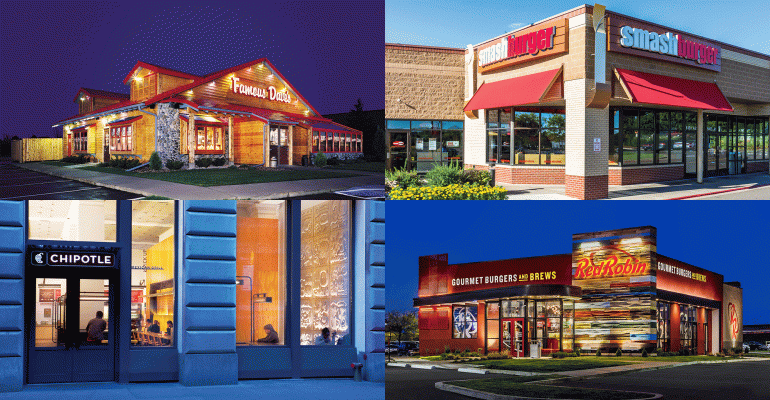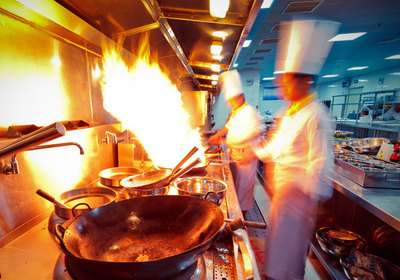
Dec 16, 2017
Andrea Strong | Eater | December 13, 2017
In early October, Danny Meyer made a big announcement. It wasn’t about tipping, or another iteration of the Shake Shack hot chicken sandwich. This one was different. He would be entering the world of private finance, starting a $200 million investment fund, with stakes in reservation-making app Resy and the New York City-based Joe Coffee. His fund, Enlightened Hospitality Investments LP (EHI), now joins a group of newly formed investment funds cleverly eyeing (and investing in) restaurants.
It’s quite an about-face from the climate just a decade ago. “Ten years ago, investment took place much farther down in the growth cycle of a concept,” says Greg Golkin, who co-founded the Kitchen Fund in 2016 to invest in early-stage scalable restaurant concepts. “You would see private equity funds or strategics coming in when brands were at scale. If you had an early-stage restaurant concept, you had to source capital from high-net-worth friends and family, or from family offices [a more formal version of investment vehicle for high-net-worth private individuals]. There was no strategic capital in the space early on.”
What’s moved the needle for many investors — and caused the creation of new funds like EHI and the Kitchen Fund, and the frenzied interest of growth investors like L. Catterton, Roark, and Karpreilly, who had previously taken positions in Chopt, Primanti Bros., Burger Lounge, California Fish Grill — is the fast-casual revolution.
“It used to be that when you opened one restaurant, you had one restaurant until you were so busy that you could not serve one more meal,” says Basu Ratnam, founder of Inday, a healthy Indian fast-casual restaurant, one of the Kitchen Fund’s first investments. “Then you thought about number two. But now, there’s a different mentality. Now you have people opening with immediate plans to scale.”
That’s in part because “away from home eating” has skyrocketed in recent years. In 2015, for the first time ever, people in the U.S. spent more money dining out then buying groceries, according to data collected by Bloomberg.
The high-return allure of the success stories like Shake Shack, Chipotle, and Sweetgreen has also made investors hungry to get in early on the next big idea. Entrepreneurs are listening, creating restaurant brands that promise investors growth and scalability. The fastest-growing categories are healthy fast-casual concepts like salads and grain bowls, “as well as anything that focuses on sustainability and organics,” says Anish Gandhi, managing director at the investment bank Brookwood Associates.
Gandhi is also seeing interest in Mediterranean concepts like hummus and kebabs and “multi-ethnic” concepts like Sushirrito and Velvet Taco. Velvet Taco, which debuted in 2011 and opened its second location in 2014, offers dishes like chicken tikka tacos and received a significant strategic growth investment from private-equity firm private equity firm L Catterton in 2016. It now has seven locations across the country.
CONTINUE READING

Nov 30, 2017
Jonathan Maze | Nation’s Restaurant News | November 15th, 2017
Declining same-store sales and traffic, and growing fears of an upcoming recession, have not scared off investors in restaurant concepts and franchisees, bidding up the prices for companies well past historical norms.
That, at least, was the general sentiment among attendees at this week’s Restaurant Finance & Development Conference in Las Vegas.
Speaker after speaker described a financing and acquisition environment in which buyers outnumber sellers, including private equity groups, strategic buyers and family offices. That’s driven up prices for some concepts to historically high levels.
“I haven’t seen an environment like this in many years,” said Chad Spaulding, managing director with industry investor Capital Spring. “There’s a tremendous amount of institutional and private cash flow chasing restaurant assets.”
Lending for these acquisitions, meanwhile, is flourishing, fueling much of the activity as the buyers can get relatively low rates from banks to make these acquisitions.
“The industry has been growing for eight years,” said Nick Cole, head of the restaurant finance division at Wells Fargo. “Supply has gotten out ahead of demand. The economy is showing signs of a recession. It’s already the third-longest expansion in history. If you’re a lender and thinking of a new five- to seven-year loan commitment, you might be thinking prospects in the future might not be healthy.
“Apparently, if you said that you’d be firing up the loan engine right now, you’d be right. Capital is still pouring into this industry.”
Sales of restaurant companies have been numerous this year. Just this week, for instance, the Canadian company MTY Food Group acquired the burger company The Counter, while the private equity firm TPG Capital acquired Mendocino Farms. And Roark Capital submitted a bid to buy Buffalo Wild Wings Inc.

Nov 13, 2017
Jonathan Maze | Nation’s Restaurant News | November 10th, 2017
Chains are slowing growth and cutting units in 2017 amid weak sales and traffic.
After years of seemingly unstoppable growth, the restaurant industry has stepped on the brakes in 2017.
Several chains in their latest earnings calls have said they plan on slowing unit growth or stopping it altogether amid weak same-store sales and traffic, as well as concerns over rising construction and real estate costs.
Many others, meanwhile, are closing units, as those sales and traffic challenges create underperforming locations that lose money and hurt overall profitability.
Here’s a look at the chains that are closing locations or slowing their growth this year or next.
CONTINUE READING

Jul 7, 2017

Apr 25, 2016
Timing is everything when you own a restaurant. When do you add seating? Is it time to hire new employees? Does it make sense to extend hours? Is there a need to launch a new marketing campaign?
Managing growth is a challenge for many small business owners—particularly for owners trying to decide whether they should finance that growth. Ian Bramson, owner of Eclectic Kitchen in Portland, OR, suggests asking yourself two questions to determine if it’s time to add staff, additional seating, or otherwise grow:
Do you really know how busy you are?
Like many restaurant owners, Bramson spends a lot of time in the kitchen making sure the food served at his restaurant keeps his diners coming back. He opened Eclectic Kitchen in 2009 with 32 seats and a focus on breakfast and lunch. “We rely on our regulars to keep us busy,” he says.
With that in mind, he adds, “it’s important to step out of the kitchen to get a feel for what’s really happening in the dining room. You can learn a lot from talking to your customers and giving the servers a hand.”
Ian suggests paying attention to how many people you have waiting, and how long they need to wait. “If people are waiting for food, it’s not a good thing,” he said. “If they’re waiting to be seated, that isn’t good, either,” he added.
While waiting is often just part of the restaurant experience, how your restaurant grows can be an important part of how you manage the wait and will likely influence your decisions about whether it’s time to hire a new server or an additional cook. It might also be an indicator of the right time to expand seating or stay open more hours.
He also suggests noting the seasonal nature of your restaurant. “We get really busy in the fall,” he says. “But our sales are up for this time of year, so we’re expecting to be busy this fall.”
Do you have a strategy to accommodate growth?
“We’re planning to increase seating with an outdoor dining area as well as adding more seating inside the restaurant to prepare for the fall,” Bramson says. “We’re also thinking about adding dinner to our menu.”
Bramson has an expansion plan for the next few months and knows that he not only wants to increase the number of tables he can serve, but will need additional staff and refrigeration to accommodate growth in the kitchen, too. “Growth in the dining room impacts everything else in the restaurant,” he says. “You need to plan for that.”
“We really depend on word-of-mouth advertising,” he says. “We focus on really good food and great coffee to make our new customers happy, keep our regular customers coming back and give them all a reason to tell their friends. In addition to food made with fresh, local ingredients, we even use a local coffee roaster our customers seem to like, Trailhead Coffee, to help set the tone for a great breakfast.”
Bramson suggests it’s important for independent restaurant owners to keep your finger on the pulse of what’s happening in the dining room, as well as the kitchen, to know when the time is right to hire new staff or otherwise expand. With that said, you need to plan for how you’re going to accommodate growth when the timing’s right.
(H/T restaurant-hospitality.com)





